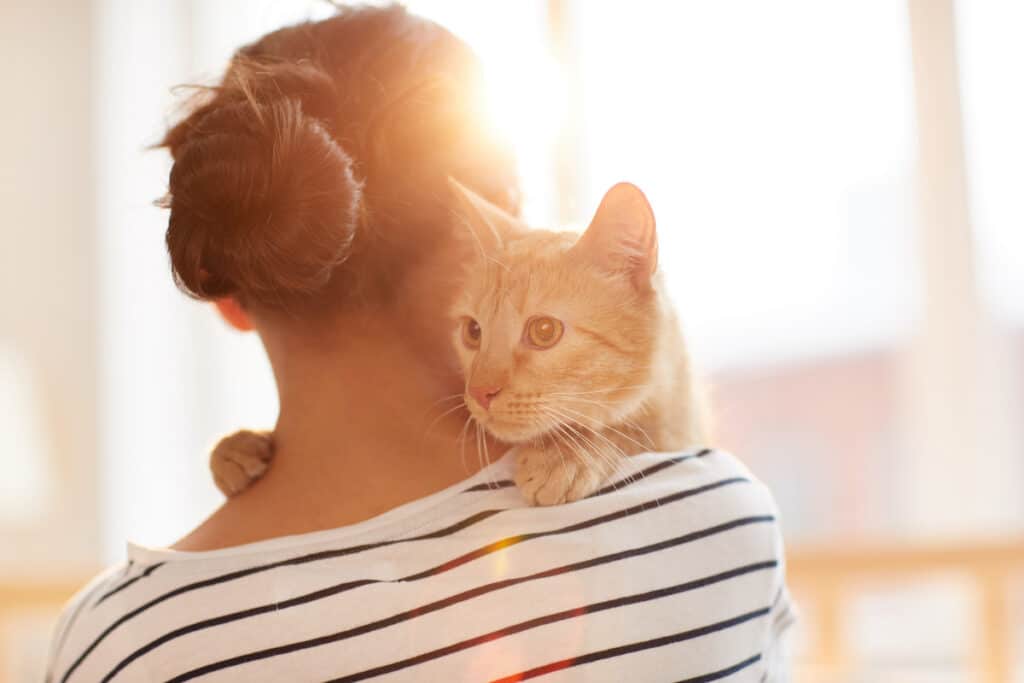Keeping your cat clean and away from areas where they can get lice is a good idea. You will also want to know how to treat lice and prevent them from spreading.
Treatments for lice
Fortunately, there are treatments for cats who get lice. These treatments are easy to use and are effective against lice.
Depending on the severity of the infestation, a veterinarian may recommend either shampoo or an insecticide. They may also recommend natural supplements or a parasite prevention plan.
In general, topical insecticides are the most effective treatments for cats who get lice. These are easy to apply and kill successive generations of lice. They can be applied every two weeks for four treatments.
Before you apply the treatment, check the cat’s bedding for lice and remove any dead or live lice. Then wash the bedding and other objects in hot water.
You can also use a fine-tooth comb to dislodge lice and their eggs. Lice are small, flat insects that cling to a cat’s hair. They live off skin debris and drink blood.
Prevention of lice in cats
Keeping your cat lice-free is a key element to keeping your cat healthy. A lice infestation will leave your cat itchy and uncomfortable. Your cat will have a rough coat and may also develop hair loss.
There are several treatments available for cat lice. Topical treatments, insecticidal powders, and insecticidal sprays are effective in getting rid of them. In addition, sulphar dips may help reduce the cat’s itching.
A veterinarian can help diagnose and treat cat lice. Your veterinarian can also prescribe a plan for preventing future infestations. In addition, your vet can check your cat for other parasites that may be present.
Cats can’t get lice from humans. The best way to prevent infestation is to clean up your cat’s environment. Clean all bedding and furnishings, as well as wash all objects that may be used by your cat. If your cat is outdoors, make sure that he or she stays in a clean, well-lit area.
Common types of lice in cats
Besides dogs, cats are also susceptible to the bite of lice. These insects are also called lice, nits, or lice eggs. These insects are small, flat, and usually white.
Cats can get lice by living in environments where they are exposed to contaminated objects. These environments include poor hygiene, poor nutrition, and inadequate sanitation. A cat with lice can also be transmitted to other cats in the home.
If a cat has an infestation of lice, it will appear itchy, matted, and may also be shedding hair. Cats with an infestation will also show signs of restlessness and agitation.
Cat lice are highly contagious. They are able to spread from cat to cat by direct contact or through sharing of grooming tools.
Lice are not as common as other parasites, but they are easily treated. Treatment of a cat with lice involves topical insecticide shampoos. It is also possible to kill lice by destroying their eggs, which are called nits. These eggs are sticky to the hair near the skin.
Diagnosing lice in cats
Having lice on your cat can be a very uncomfortable experience. It is important to diagnose the condition as early as possible, and start treatment to prevent further infestations.
The first sign to look for is itching. The cat may be scratching or biting at infected areas. Another sign is loss of hair. The cat may become restless and irritable.
If you suspect a louse infestation, you can use a fine toothed comb to pick up the nits. These are tiny white flakes that stick to the cat’s hair. They are usually visible when the cat’s hair is parted.
A vet can examine your cat for lice. They will also ask about your cat’s medical history and ask about any other conditions. If your cat is infested, they may recommend skin tests to diagnose the condition. The vet may also prescribe medications for the lice.
Preventing lice from spreading
Getting rid of lice on your cat can be a challenging task. You must take precautions to prevent the spread of the lice and control the number of lice in your home.
There are numerous treatments available for the removal of lice. However, most of them are ineffective. In fact, they can be dangerous. The best treatment involves cleaning the environment, clipping the fur, and treating the cat for secondary infections.
One of the most effective methods for preventing cats from getting lice is to keep them away from other cats. This is because lice only survive on host animals.
In fact, they are unlikely to survive for more than a few days without a host. In fact, lice cannot survive for more than a few hours without human body temperature.














